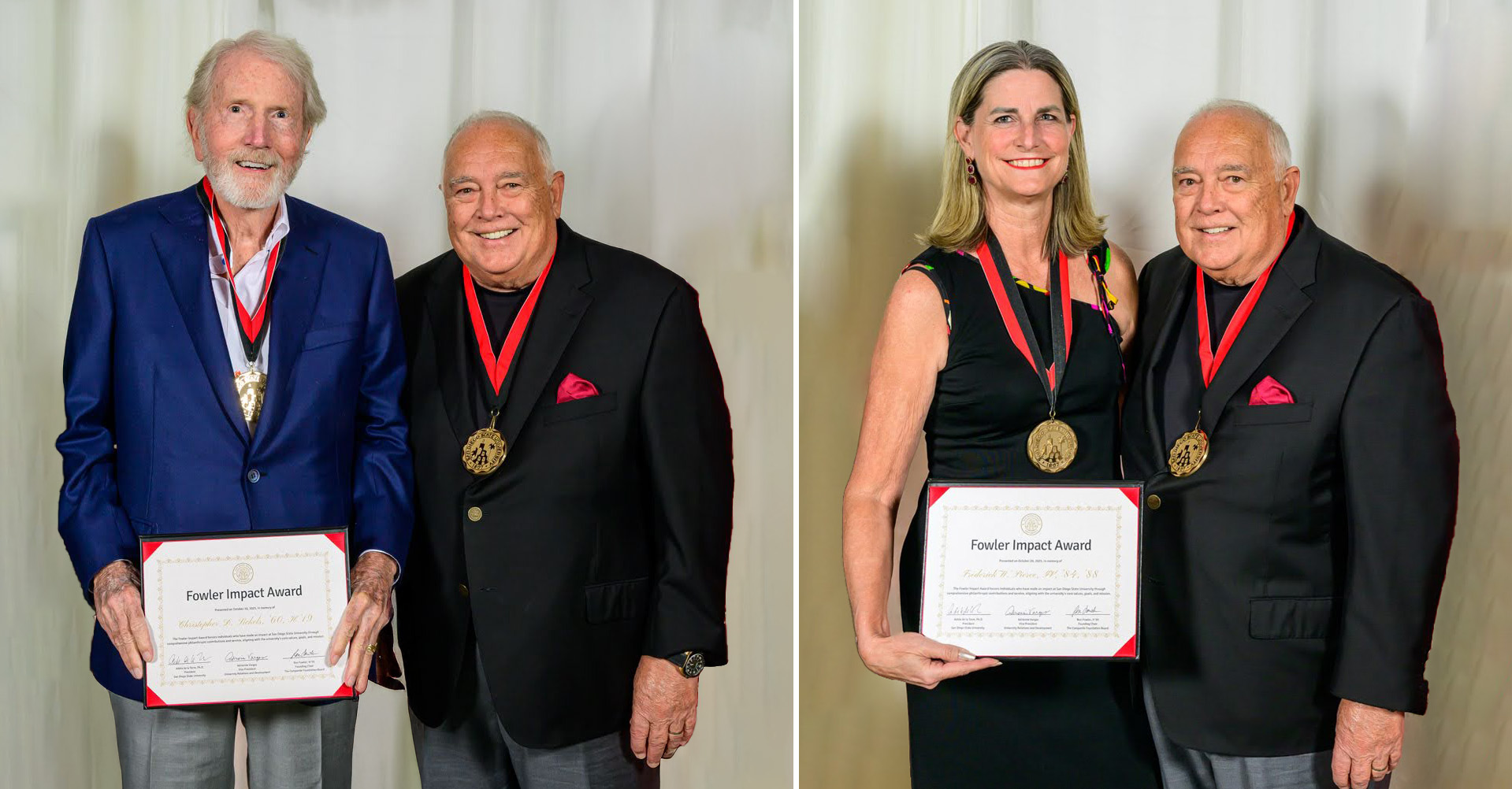Renewed Hope for the Brain-injured
SDSU's Center for Sensorimotor Neural Engineering receives $15-$20 million renewed funding from the National Science Foundation.

“We will be able to continue our work and produce major milestones building on the success that we’ve had over the past five years.”
One day soon, people who suffer traumatic injury to their spinal cord and lose the use of their limbs could regain that mobility thanks to a clever workaround: a brain chip that reroutes neural signals around the injured nerves combined with a receiver that picks them up on the other side.
This work is getting closer to reality in the Center for Sensorimotor Neural Engineering (CSNE), led by researchers at San Diego State University, the University of Washington and the Massachusetts Institute of Technology. To help usher along this ambitious and much-needed technology, the National Science Foundation recently renewed funding for the CSNE, providing an additional $15 million to $20 million over the next five years.
Using implantable chips in the brain is an important and growing trend in medical science, said Sam Kassegne, deputy director for the CSNE at SDSU and a professor in the mechanical engineering department. In the United States alone, there are more than 100,000 people who have brain-implanted electrodes to help manage a number of diseases and conditions including Parkinson’s disease and chronic depression.
Creating a detour
Think of the ability to use implantable electrodes to restore motor function as installing a detour in the brain-to-body communication system.
“Neural signals are electrical in nature,” Kassegne explained. “When the brain or spinal cord is damaged, those electrical signals can’t get through. There’s nothing wrong with the signal, but it’s being blocked.”
Electrodes can listen to these electrical signals where they originate in the brain—“decoding the intent to use the limb,” as Kassegne puts it—then feed that information into a device that converts the electrical signal into a wireless transmission. A receiver in the functionally paralyzed limb picks up that information, converts it back into the original electrical signal as accurately as possible and stimulates the nerves, restoring function.
In 2011, the National Science Foundation awarded SDSU, UW and MIT an $18.5-million Engineering Research Center (ERC) grant to establish the CSNE. The center was funded to research better ways to use electronic devices to pick up and transmit neural signals, as well as explore ways to make those devices safe, energy efficient and informationally secure.
Each of the universities involved in the center focuses on particular areas of expertise, but they closely collaborate on the shared goal of developing high-functioning brain-computer interfaces that can restore motor function to people with nervous system injuries.
Power from ultrasound
Over the past five years, 13 SDSU faculty members and dozens of graduate and undergraduate students have made huge strides in several facets of the project. Mechanical engineer Kee Moon and colleagues have developed a method for powering and recharging implantable brain devices with ultrasound—a novel and convenient method for providing power to implanted machines. Computer engineer Yusuf Ozturk has worked on using Bluetooth technology to transmit information across implanted devices in an energy efficient manner. (For a full listing of SDSU researchers involved in the CSNE, visit the center’s website.)
Several researchers within the CSNE, including Kassegne, Moon and Ozturk, are also heading up SDSU's new Smart Health Institute—one of the university's identified areas of excellence—which will further explore the potential of wearable biomedical technology.
Today, researchers across the CSNE’s various institutions are working with an implantable chip about the size and width of a cardboard beverage coaster that can read signals from about 10,000 neurons. In five years’ time, Kassenge hopes that will increase to millions of neurons, as well as account for the interactions between them.
Increasing that capacity will allow the device to restore more complex motor functions. Right now, the technology might allow someone with a nervous system injury to be able to pick up a coffee cup. One day improved versions of these devices could allow them to play the piano. In the coming years, the researchers will continue to validate the results they’ve generated during the first stage of the grant, as well as work toward early-stage clinical trials in humans.
“We hope over the next five years, we’ll come to understand more of this and make the brain-computer interface more natural,” Kassegne said. “We will be able to continue our work and produce major milestones building on the success that we’ve had over the past five years.”
“It’s the brain”
The ERC funding is also planting the seeds of future success in the field, making it possible for young scientists and students to receive training in a critically important area of research. An education, diversity and outreach team within CSNE also works with SDSU’s Mathematics, Science and Engineering Achievement programs, as well as at Southwestern College, to introduce this burgeoning field to the San Diego community.
“One of the interesting outcomes of the ERC grant has been the excitement it has generated among our undergraduate and graduate students,” Kassegne said.
Mieko Hirabayashi, a graduate student in Kassegne’s lab, is just one of these budding scientists hoping to change lives through a fruitful career in brain-computer interface research.
“This is really my dream job,” she said. “I came here for the opportunity to work on medical devices for the brain. It was extremely exciting because it’s exactly what I want to do. And it’s the brain! Who isn’t interested in the brain?”


